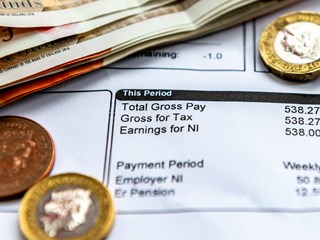
Article written by Kellands Hale, our preferred independent advice firm.
This article is not intended to be financial advice to any individual. The views expressed are those of the author and Moneyfactscompare.co.uk does not endorse the content.
The year of 2022 proved tumultuous for the UK’s financial landscape.
We saw four Chancellors take on the top job of managing the UK economy, all of whom attempted to grapple with the lasting economic effects of the COVID-19 pandemic, supply chain issues and the war in Ukraine.
All of this pushed inflation into double figures, with continued market volatility causing worry for investors in the UK and around the world.
Then, in November 2022, Chancellor Jeremy Hunt issued his Autumn Statement. In it, he announced a series of measures that will reduce some unearned income allowances, as well as shifting the rate at which high earners will pay additional-rate (45%) tax.
These changes will come into force in April 2023 – so it’s essential to understand how they could affect your wealth as a high-earning individual.
As you may already know, the Income Tax Personal Allowance, standing at £12,570 in the 2022/23 tax year, reduces by £1 for every £2 earned over £100,000 – meaning it disappears completely at £125,140.
So, the amount earned between £100,000 and £125,140 is effectively taxed at 60%. This represents the 40% tax you pay and the fact that the loss of the Personal Allowance means this is also taxed at 20%.
By 2028, this £100,000 Personal Allowance threshold will have been frozen for 18 years and, with wages rising, more people are being pushed into this bracket.
Coupled with the cost of living crisis, if you are facing a rising tax bill you might feel worried about how you can achieve your goals in the coming years.
Most importantly, it’s wise to remember not to panic. There are still valuable tax breaks available for you to use, such as the pensions Annual Allowance, that can help lower your Income Tax bill in the coming years.
One crucial factor to consider when preparing to pay a higher rate of Income Tax is how this increased liability could interact with other changes to your financial plan.
For instance, an important announcement the Chancellor made in November’s Autumn Statement was a cut to the level at which earners will pay additional-rate tax from April 2023.
While the additional-rate Income Tax band previously began at £150,000, it has been reduced to £125,140. If you earn more than this sum, you could be paying additional-rate Income Tax for the first time.
Hunt also announced that:
If you take dividends as part of your remuneration package, regularly earn profits from capital gains, or are set to receive inheritance in the coming years, your tax bill for each of these could increase too.
So, the importance of preparing to pay higher tax across many areas of your life cannot be understated.
If you’re feeling anxious about your finances in the years to come, you aren’t alone. Many earners in your position could be searching for ways to manage the change – and a professional financial planner can help.
By working with us as your tax situation changes, you could:
Without guidance, it could be that you aren’t making the most of the tax breaks you can use. If you are effectively paying 60% tax on a portion of your income, making additional pension contributions or utilising those allowances could make a huge difference.
For example, if you earn £140,000 a year, you will pay additional-rate tax for the first time from April 2023.
Due to the deduction of the Personal Allowance, you will also pay an effective rate of 60% tax on the amount between £100,000 and £125,140.
By rerouting some or all of these funds into your pension, however, you could receive tax relief on that contribution, and maintain some or all of your Personal Allowance. Overall, this may be a more tax-efficient strategy for your wealth.
This is just one example of how your Kellands financial planner can help you draw a tax-efficient income in the coming years.
So, meeting with your financial planner could provide you with the peace of mind you need as your tax bill increases.
If you are set to pay increased tax from April 2023, contact us for a full review of your financial circumstances today.
Email us at hale@kelland.co.uk, or call 0161 929 8838.
Please note
This blog is for general information only and does not constitute advice. The information is aimed at retail clients only.
Please do not act based on anything you might read in this article. All contents are based on our understanding of HMRC legislation, which is subject to change. Kellands (Hale) Limited is authorised and regulated by the Financial Conduct Authority. FCA Firm Reference No. 193498
Information is correct as of the date of publication (shown at the top of this article). Any products featured may be withdrawn by their provider or changed at any time. Links to third parties on this page are paid for by the third party. You can find out more about the individual products by visiting their site. Moneyfactscompare.co.uk will receive a small payment if you use their services after you click through to their site. All information is subject to change without notice. Please check all terms before making any decisions. This information is intended solely to provide guidance and is not financial advice. Moneyfacts will not be liable for any loss arising from your use or reliance on this information. If you are in any doubt, Moneyfacts recommends you obtain independent financial advice.